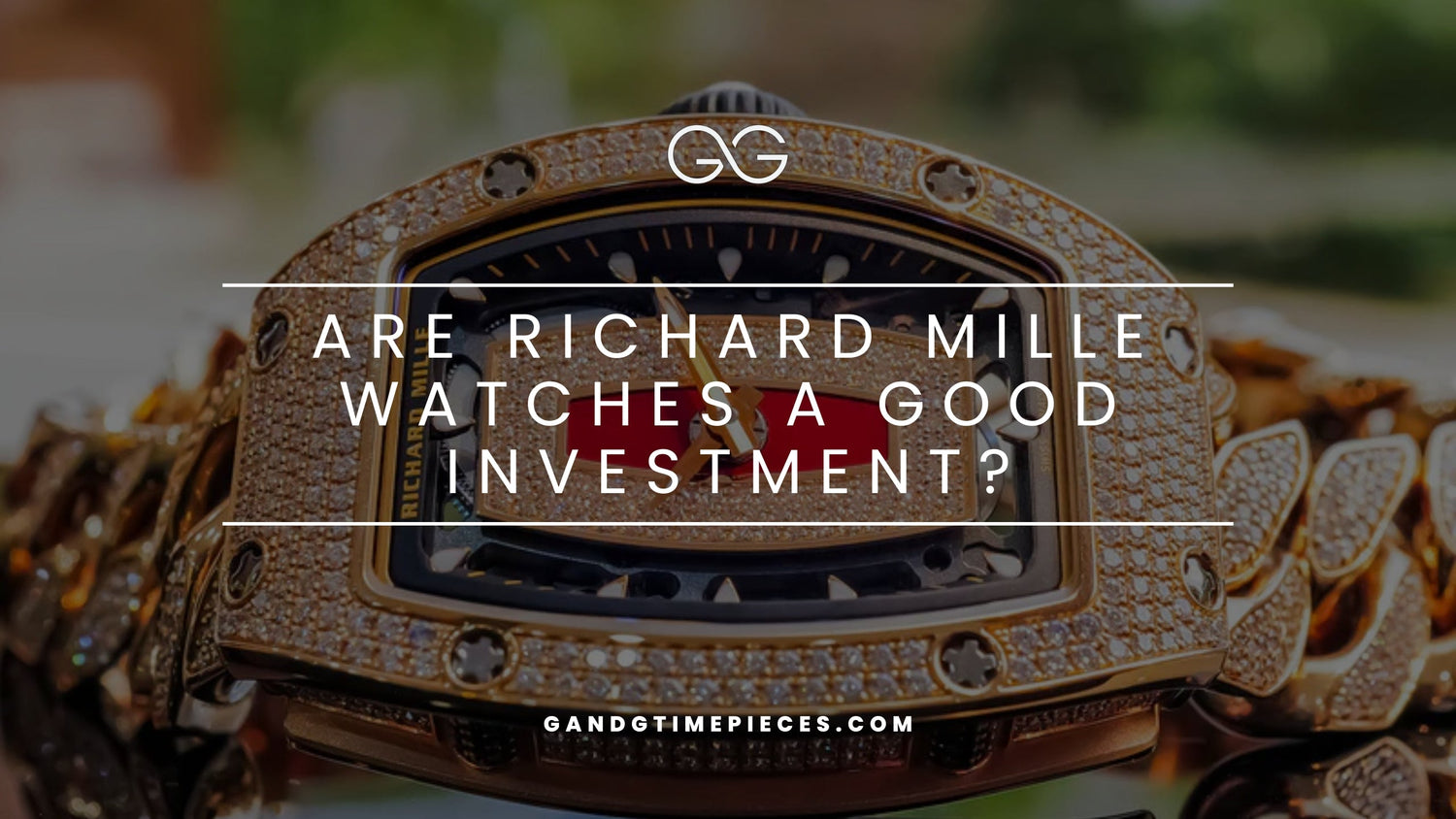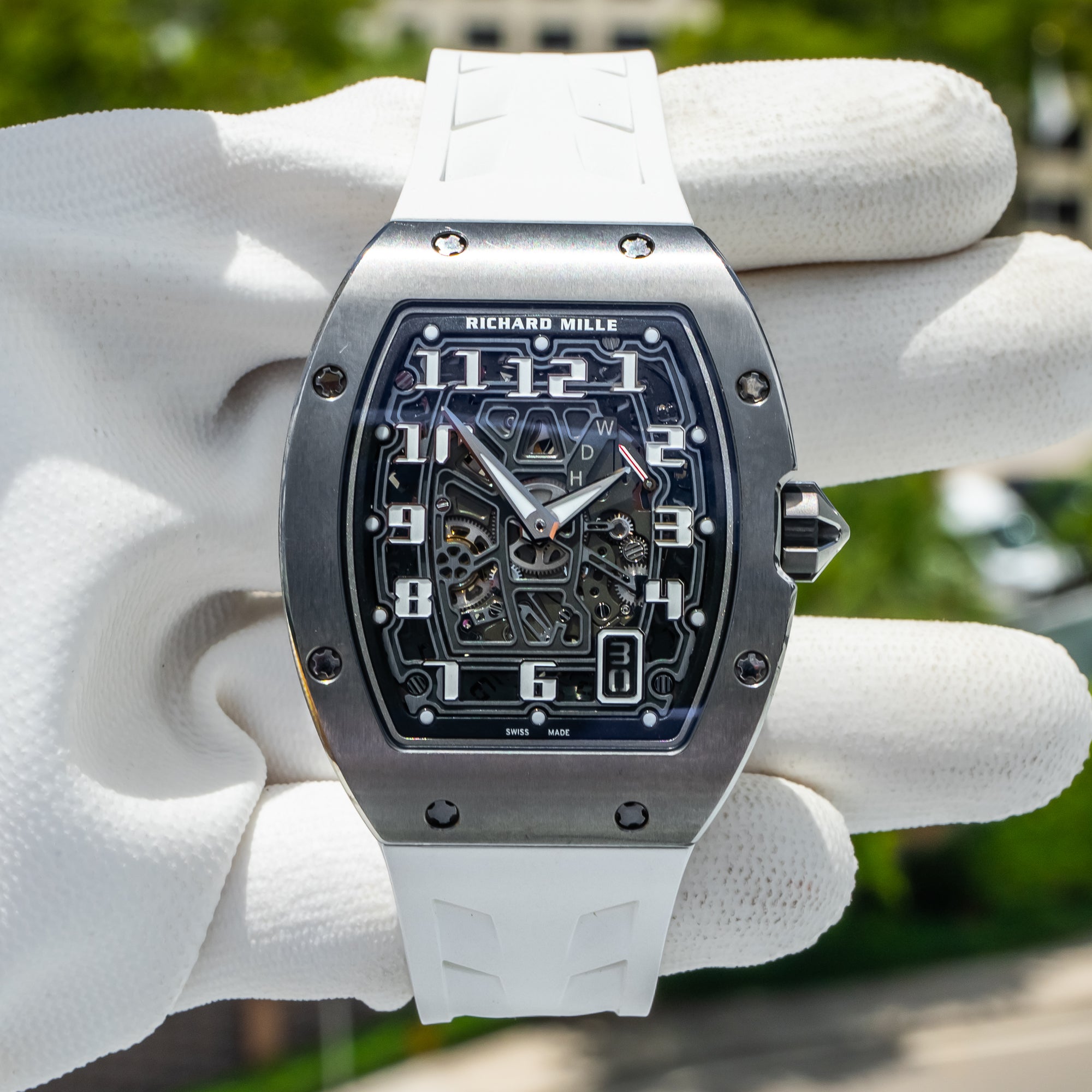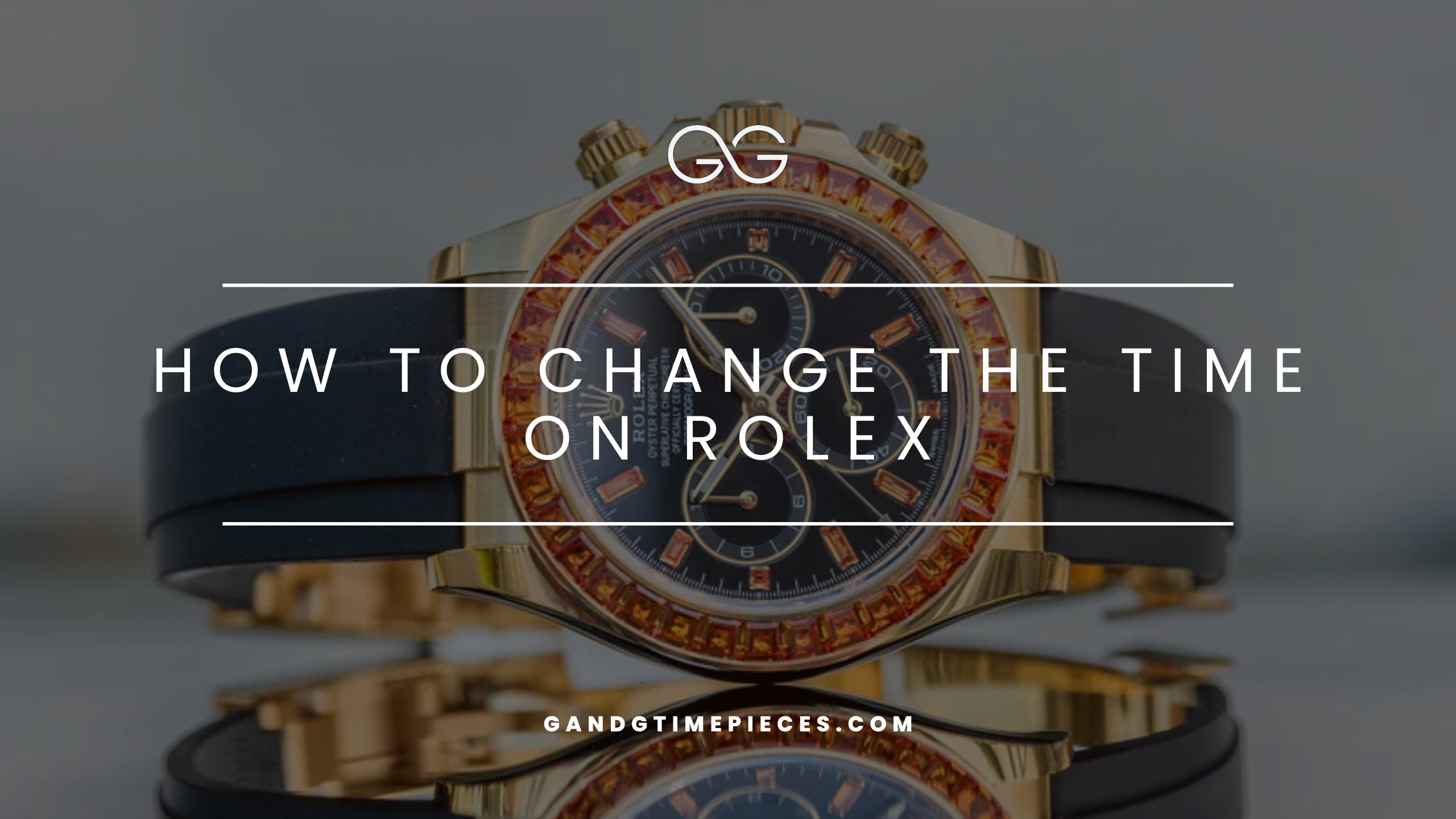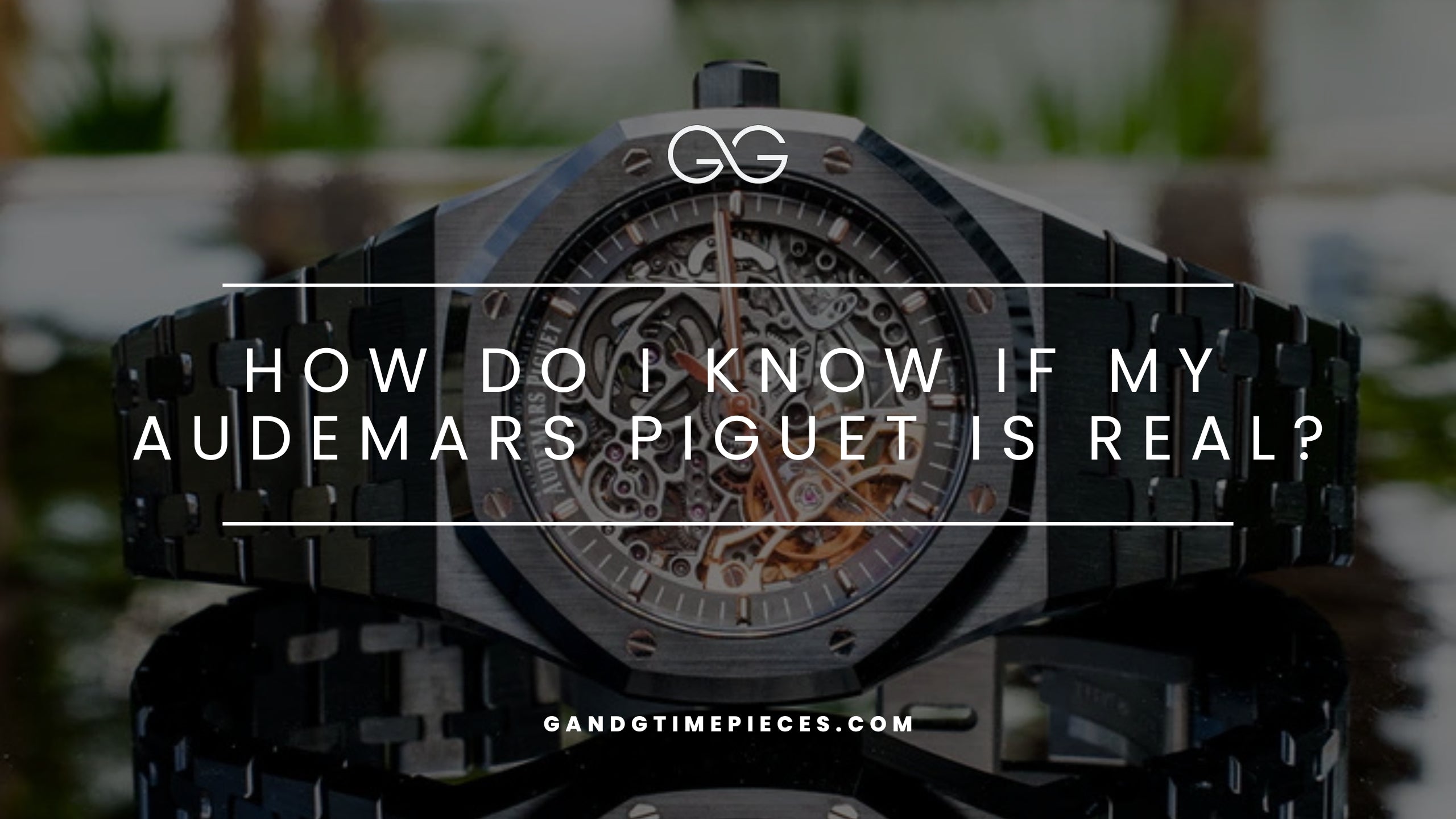A Richard Mille watch that retailed for $80,000 in 2016 recently sold for over $340,000. That’s more than a 300% return in just six years—the kind of performance that makes luxury watch collectors sit up and take notice. But before you start thinking every Richard Mille watch is a guaranteed goldmine, let’s dig into what actually makes these timepieces tick as investments.
The short answer? Richard Mille watches can be excellent investments, but success depends heavily on which models you choose and how well you understand the market dynamics at play.
Investment Verdict: Strong Potential with Considerations
Here’s the deal with richard mille as an investment play: the numbers look pretty compelling. The richard mille brand produces fewer than 5,500 watches annually—that’s tiny compared to other luxury watch brands like Rolex, which cranks out nearly a million pieces each year. This limited production creates natural scarcity, and in the luxury watch market, scarcity drives value.
Models like the RM 011, RM 035, and RM 055 have shown substantial price appreciation over time, with some Richard Mille timepieces reselling for more than double their original retail price during strong market periods. Industry data suggests popular Richard Mille models average around 10% annual value increases, though certain pieces have delivered annualized returns of up to 30%.
The secondary market for these luxury timepieces is remarkably competitive. Limited supply and strong buyer demand frequently push pre-owned Richard Mille watches above their original retail prices—especially for discontinued or limited edition models. But here’s the catch: not every Richard Mille watch will make you money. Investment success requires careful model selection and solid market understanding.
Factors Driving Investment Value
Several key factors make Richard Mille watches attractive to both watch enthusiasts and serious investors. Understanding these drivers helps explain why certain models appreciate while others don’t.
Limited Production Creates Premium Demand
The biggest factor behind Richard Mille’s investment potential is simple mathematics. When you’re producing under 5,500 watches per year versus hundreds of thousands from other luxury brands, you’re operating in a completely different supply-demand equation. Some limited editions, like the RM 52-05 Tourbillon Pharrell Williams, were restricted to just 30 pieces worldwide—creating instant collector fever.
Even regular production models face long waiting lists at authorized dealers. Typical wait times stretch beyond two months for well-connected clients, while newcomers often find themselves completely shut out. This limited availability keeps the secondary markets humming with activity and prices elevated.
Cutting Edge Materials and Innovation
What makes richard mille watches special isn’t just their rarity—it’s what goes into making them. The brand pioneered the use of cutting-edge materials borrowed from Formula 1 and the aerospace industries. We’re talking NTPT carbon, Grade 5 titanium alloys, and fully transparent sapphire crystals.
These aren’t just fancy materials for show. The RM 27-01, for example, weighs only 1.41 ounces but can withstand shocks up to 5,000 Gs. That’s serious engineering that justifies the high price tags and helps maintain long-term value appreciation. When you’re using the same carbon composites found in racing machines, you’re not just buying a watch—you’re buying cutting-edge technology.
Celebrity Endorsements and Status Symbol Appeal
The Richard Mille brand has mastered the art of celebrity association without making it feel forced. When Rafael Nadal wears his RM 27-03 during Wimbledon matches, or when Jay Z drops $2.5 million on a custom RM 056 Blue Sapphire, it’s not just clever marketing—it’s proof these watches can handle real-world performance while serving as ultimate status symbols.
Drake’s $2.2 million RM 056 Tourbillon Sapphire has become legendary in watch collector circles. Felipe Massa trusts his Richard Mille during high-speed F1 races. These aren’t paid sponsorships where celebrities awkwardly hold products—these are genuine partnerships that demonstrate the watches’ capabilities while reinforcing their position among luxury brands.
Historical Performance and Price Appreciation
The investment track record for Richard Mille models tells a compelling story, though it’s important to look at specific examples rather than broad generalizations.
The RM 55 “Bubba Watson” provides a perfect case study. Released at $80,000 in 2016, it climbed to an average sale price of $170,000 by 2020, then shot up to the $320,000-$342,000 range by 2022. That represents a 30.5% annual return over seven years—substantially outperforming most traditional investments.
At the ultra-high end, auction results have been spectacular. The RM 56-01 Sapphire Tourbillon broke records at Christie’s Geneva in November 2022, selling for CHF 3,654,000 (roughly $3.8 million). The RM 27-03 models associated with Rafael Nadal routinely fetch millions at major auction houses.
These aren’t isolated incidents. Since the brand’s launch in 2001, Richard Mille watches—especially discontinued or highly sought-after limited editions—have consistently appreciated well above their original retail prices. The key is that this appreciation isn’t just hype; it’s supported by genuine scarcity and sustained demand from affluent collectors worldwide.
Celebrity Endorsements and Brand Prestige
The richard mille brand’s celebrity connections go deeper than typical luxury watch endorsements. These partnerships showcase both the technical capabilities and lifestyle appeal that drive investment demand.
Rafael Nadal’s collaboration with Richard Mille produced some of the world’s lightest tourbillon watches, proving these timepieces can withstand the rigorous testing of professional tennis while maintaining haute horology standards. When Nadal wins major tournaments wearing his RM 27-03, it’s a real-world stress test that no amount of marketing could replicate.
In the music world, the brand has become synonymous with having made it to the big boys table. Jay Z’s custom pieces and Drake’s collection signal membership in an exclusive club where big money meets exquisite craftsmanship. Pharrell Williams’s collaboration resulted in limited edition models that sold out instantly and now trade at massive premiums.
This celebrity association creates a halo effect that extends far beyond the entertainment industry. In business circles and among watch enthusiasts, owning certain richard mille models has become the ultimate status symbol—driving sustained high demand that supports investment potential.
Innovation and Technical Excellence
The investment case for Richard Mille watches rests heavily on genuine technical innovation. This isn’t just about luxury—it’s about pushing the boundaries of what’s possible in mechanical watchmaking.
The brand’s use of futuristic materials creates watches that are virtually indestructible while remaining incredibly light. The signature tonneau-shaped cases with their three-deck sandwich construction provide superior shock-resistant protection compared to traditional round cases. Skeletonized movements and tourbillon mechanisms showcase the horological excellence that master watchmakers pour into each piece.
These technical advances aren’t just marketing features—they’re patented innovations that provide real competitive advantages. When you’re buying a Richard Mille, you’re investing in research and development that often takes years to trickle down to other brands in the luxury watch segment.
The combination of exotic materials, innovative designs, and proven durability creates timepieces that maintain their technological edge even as new models are released. This helps explain why even older Richard Mille models continue appreciating rather than becoming obsolete.
Investment Risks and Considerations
Despite strong historical performance, investing in Richard Mille watches comes with risks that prospective buyers need to understand.
High Barriers to Entry
The Richard Mille watch cost creates an immediate challenge—entry-level models start around $60,000, while complicated or limited pieces can exceed $1.3 million. This isn’t pocket change, and it means your investment is highly concentrated in a single luxury item. Market volatility can affect values significantly, especially during economic downturns when luxury spending contracts.
Authentication and Counterfeit Risks
The popularity of Richard Mille watches has attracted sophisticated counterfeiters. Fake Richard Mille pieces can be compelling, making authentication crucial for any purchase. Always buy from reputable dealers who can provide proper documentation and serial number verification. A fake watch isn’t just worthless—it can actively harm your reputation in collector circles.
Maintenance and Ownership Costs
These aren’t simple watches you can take to any local repair shop. The innovative materials and complex movements require specialized knowledge that only Richard Mille-certified technicians possess. Factory service costs are substantial, and regular maintenance is essential to preserve both function and resale value.
Model Selection Matters
Not every Richard Mille is appreciated equally. More common models without special provenance may remain flat or even decline in value. The highest quality watches with limited availability or celebrity connections tend to perform best, but identifying these opportunities requires deep market knowledge and timing.
How to Maximize Investment Potential
Success in the Richard Mille investment game comes down to strategy, research, and patience. Here’s how serious collectors and investors approach the market.
Research Market Trends and Model Desirability
Before buying any Richard Mille, study current demand patterns and production numbers. Limited edition models and pieces with celebrity associations typically offer the best investment potential. Follow auction results and secondary market pricing to understand which references are trending upward.
Track the brand’s release schedule and identify discontinuation patterns. Models that are about to exit production often see immediate price bumps as collectors rush to secure pieces before they become unavailable from authorized dealers.
Focus on Provenance and Documentation
Complete documentation dramatically affects resale value. Original packaging, warranty cards, service records, and purchase receipts can add thousands to a watch’s value. Missing paperwork raises authentication questions and makes selling more difficult.
When possible, buy from authorized dealers or established pre-owned specialists with solid reputations in the watch world. These sources provide authentication guarantees and often have relationships that give access to rare or allocation-only pieces.
Consider Pre-Owned Options for Rare Models
The pre-owned market offers immediate access to discontinued models and limited editions that may not be available new. Established collectors often sell pieces to fund new acquisitions, creating opportunities to acquire rare models without waiting lists.
Pre-owned purchases can also provide better investment entry points, especially if you can identify undervalued pieces that haven’t fully reflected their rarity in current pricing.
Maintain and Preserve Your Investment
Proper storage, regular servicing, and careful handling preserve both function and value. Keep complete records of any maintenance work, and use only authorized service centers. Even minor damage can significantly impact resale prices, so consider insurance and secure storage.
Conclusion: Investment Outlook
So are richard mille watches a good investment? For the right models purchased at appropriate prices, the answer is generally yes. The combination of limited production, innovative materials, celebrity appeal, and strong collector demand creates favorable conditions for long-term value appreciation.
The brand’s track record shows consistent price growth for highly sought pieces, with some models delivering exceptional returns that outpace traditional investments. The limited supply from annual production under 5,500 pieces virtually guarantees continued scarcity, while ongoing innovation maintains technological relevance.





